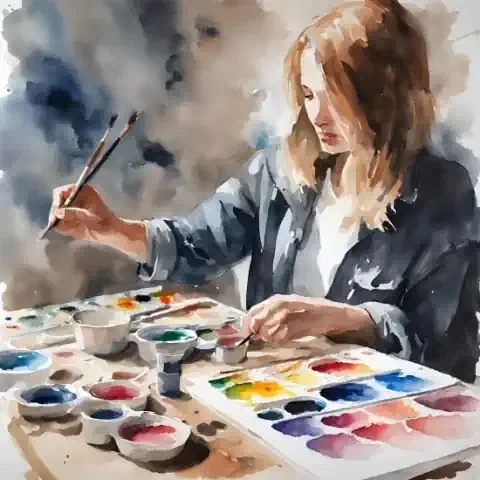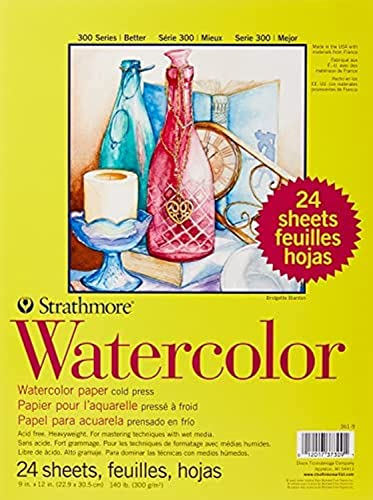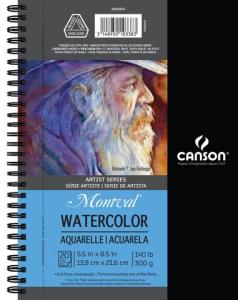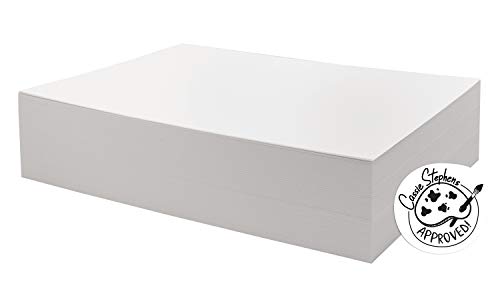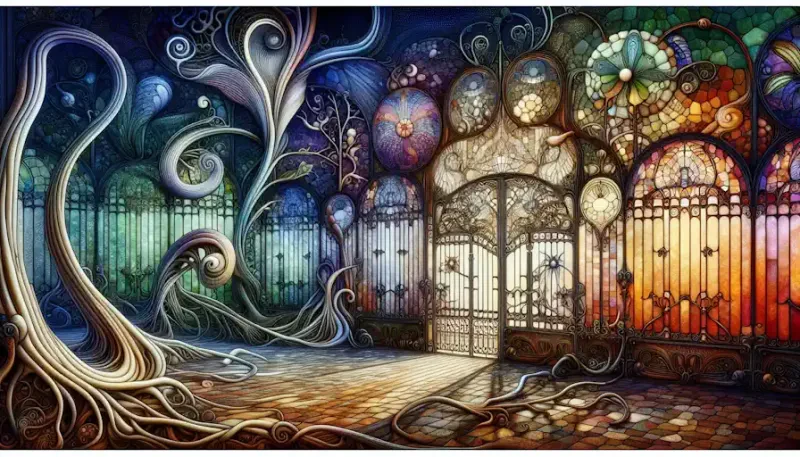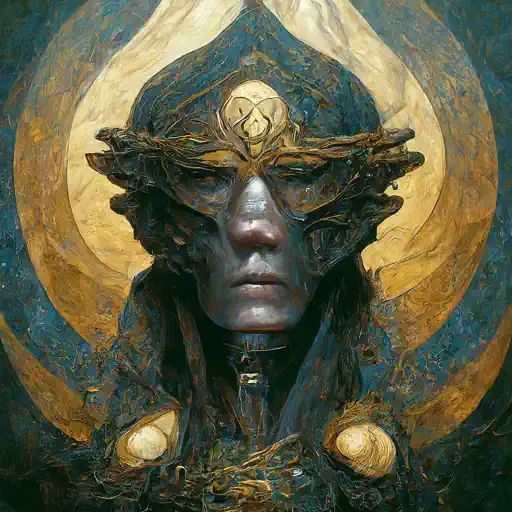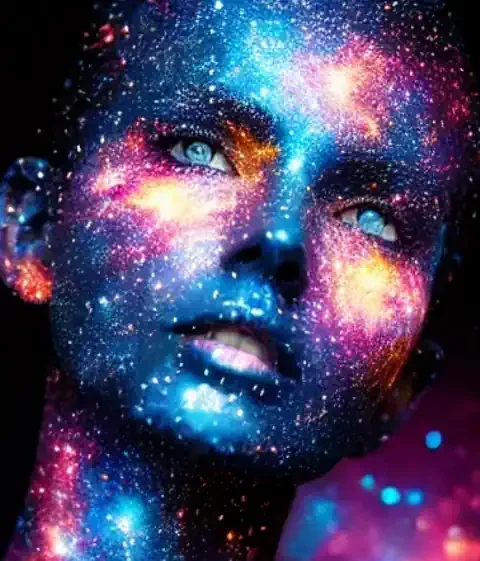Introduction to Watercolor Painting
Watercolor painting, revered for its ethereal beauty and fluidity, has enchanted artists for centuries. From delicate washes to bold brushstrokes, this versatile medium offers endless opportunities for artistic expression. In this introductory section, we'll explore the essence of watercolor painting, its historical significance, and why it continues to captivate artists around the world.
Defining Watercolor Painting
Watercolor painting is a technique that utilizes water-soluble pigments to create artworks on paper. Unlike other painting mediums, such as oils or acrylics, watercolor relies on the transparency of its pigments and the white of the paper to achieve luminous effects and subtle nuances of color. The interaction between water, pigment, and paper is at the heart of watercolor painting, giving rise to its distinctive qualities of transparency, fluidity, and spontaneity.
Historical Significance
Watercolor painting has a rich history dating back centuries, with roots tracing back to ancient civilizations such as Egypt and China. Throughout history, watercolor has been used for various purposes, from illustrating manuscripts and botanical studies to documenting landscapes and architectural scenes. During the Renaissance period, watercolor gained popularity as a medium for preliminary sketches and studies, valued for its immediacy and portability.
In the 18th and 19th centuries, watercolor emerged as a respected artistic medium in its own right, with artists such as J.M.W. Turner and Winslow Homer pushing the boundaries of the medium and elevating it to the level of fine art. Today, watercolor continues to thrive as a vibrant and dynamic medium, embraced by artists of all backgrounds and disciplines for its expressive potential and versatility.
The Allure of Watercolor
What sets watercolor apart from other painting mediums is its unique combination of transparency, luminosity, and unpredictability. The fluid nature of watercolor allows for spontaneous mark-making and serendipitous effects, making each painting a journey of discovery and exploration. Whether you're a seasoned artist or a beginner, the allure of watercolor lies in its ability to evoke emotion, capture fleeting moments, and convey the beauty of the world around us.
In the subsequent sections of this article, we'll delve deeper into the techniques, materials, and creative possibilities of watercolor painting, providing you with the knowledge and inspiration to embark on your own watercolor journey. So grab your brushes, prepare your palette, and let's dive into the captivating world of watercolor painting together.
Getting Started with Watercolor Painting
Watercolor painting, with its ethereal translucency and vibrant hues, has captivated artists for centuries. From delicate washes to bold strokes, this medium offers a wide range of creative possibilities. Whether you're a seasoned painter or just starting your artistic journey, diving into watercolor opens up a world of exploration and expression.
Essential Materials and Tools
Before you embark on your watercolor journey, it's essential to gather the right materials and tools. Here's a breakdown of what you'll need:
Watercolor Paints: Available in tubes or pans, watercolor paints come in a vast array of colors. Tubes offer more intense pigmentation and are suitable for mixing larger quantities of paint, while pans are convenient for on-the-go painting and offer a more controlled approach to color mixing.
Brushes: Choosing the right brushes is crucial for achieving various effects in watercolor painting. Different brush shapes, such as rounds, flats, and liners, offer versatility in strokes and details. Additionally, consider the size and material of the brush—natural hair brushes hold more water and are ideal for blending, while synthetic brushes offer durability and precision.
Paper: Watercolor paper comes in various weights and textures, ranging from rough to smooth. The weight of the paper affects its durability and how much water it can absorb without buckling. Textured papers, such as cold-pressed or rough, provide interesting surface effects and are well-suited for expressive brushwork.
Palette: A palette is essential for mixing and diluting watercolor paints. Choose a palette with wells or compartments to keep your colors organized and prevent them from blending unintentionally.
Water Containers: Having separate containers for clean water and dirty water is essential for maintaining the purity of your colors. Opt for large containers that allow you to rinse your brushes thoroughly between colors.
Masking Fluid: Masking fluid is a liquid latex compound used to preserve areas of the paper from paint. It's applied before painting and peeled off once the paint is dry, revealing crisp, untouched areas.
Additional Supplies: Other useful supplies include a pencil for sketching, eraser, paper towels for blotting excess water, and masking tape for securing your paper to a flat surface.
Setting Up Your Workspace
Creating a conducive workspace is essential for an enjoyable and productive painting session. Here are some tips for setting up your watercolor studio:
Lighting: Natural light is ideal for painting, as it provides accurate color representation. Position your workspace near a window or invest in a daylight lamp to mimic natural sunlight.
Easel or Flat Surface: Decide whether you prefer to work on an easel or a flat surface. Easels offer versatility in painting angles, while a flat surface provides stability and control.
Organized Layout: Arrange your materials and tools within easy reach to avoid interruptions during the painting process. Keep your palette, water containers, and brushes within arm's reach for quick access.
Comfortable Seating: Ensure that your chair provides adequate support and comfort for long painting sessions. Proper posture is essential for maintaining control and precision in your brushwork.
Inspiring Environment: Surround yourself with inspiration, whether it's artwork, plants, or music. Creating a stimulating environment can fuel your creativity and enhance your painting experience.
By assembling the right materials and creating a conducive workspace, you're setting yourself up for success in your watercolor journey. In the next section, we'll explore fundamental watercolor techniques to help you unleash your creativity on paper.
Understanding Watercolor Techniques
Now that you've set up your workspace and gathered your materials, it's time to delve into the fascinating world of watercolor techniques. Mastering these techniques will empower you to create stunning works of art, from delicate washes to intricate details. Let's explore some fundamental watercolor techniques and how to execute them effectively:
Wet-on-Wet Technique
The wet-on-wet technique involves applying paint to a wet surface, allowing colors to blend and flow seamlessly. This technique is perfect for creating soft transitions and atmospheric effects. Here's how to execute the wet-on-wet technique:
Prepare Your Paper: Wet your watercolor paper evenly with clean water using a large brush. Be careful not to oversaturate the paper, as excessive water can cause the colors to bleed uncontrollably.
Apply Paint: While the paper is still wet, apply diluted watercolor paint using a brush loaded with pigment. Watch as the colors spread and mingle on the wet surface, creating beautiful gradients and soft edges.
Experiment with Timing: The timing of your brushstrokes is crucial in wet-on-wet painting. Try applying paint when the surface is very wet for maximum blending, or wait until it's slightly damp for more controlled effects.
Layering Colors: You can layer different colors and tones while the paper is wet to create depth and complexity in your paintings. Allow each layer to dry partially before adding the next to prevent colors from muddying together.
Wet-on-Dry Technique
Contrary to the wet-on-wet technique, the wet-on-dry technique involves applying paint to a dry surface, resulting in more defined edges and sharper details. This technique is ideal for adding intricate textures and fine lines to your paintings. Here's how to execute the wet-on-dry technique:
Start with Dry Paper: Ensure that your watercolor paper is completely dry before applying paint. This will allow you to maintain control over your brushstrokes and achieve crisp, detailed effects.
Mix Your Colors: Mix your desired watercolor pigments on your palette, adjusting the consistency with water to achieve the desired opacity and intensity.
Apply Paint with Precision: Using a fine-tipped brush, carefully apply the paint to the dry paper, paying attention to details and contours. Experiment with varying brush pressure and techniques to create different effects.
Layering and Glazing: With the wet-on-dry technique, you can layer colors on top of each other to build up depth and richness in your paintings. Allow each layer to dry completely before adding subsequent layers to avoid smudging or lifting.
Dry Brushing
Dry brushing involves applying thick, concentrated paint to a dry surface using a brush with minimal water. This technique is perfect for creating texture, highlights, and expressive brushstrokes in your paintings. Here's how to execute dry brushing:
Load Your Brush: Load your brush with undiluted watercolor paint, ensuring that the bristles are coated evenly but not overly saturated with water.
Remove Excess Paint: Wipe off excess paint from your brush using a paper towel or tissue, leaving behind a small amount of pigment on the bristles.
Apply Paint with Control: With a light touch, apply the dry brush to the dry paper, allowing the texture of the paper to catch the paint and create interesting marks and patterns. Experiment with different brushstrokes and angles to achieve desired effects.
Layering and Blending: You can layer dry brushstrokes over washes or other dry brushwork to add depth and dimension to your paintings. Blend colors directly on the paper by gently overlapping brushstrokes or using a clean, dry brush to soften edges.
By mastering these fundamental watercolor techniques, you'll gain confidence and versatility in your painting practice. In the next section, we'll explore basic color mixing and blending techniques to help you achieve the perfect palette for your artwork.
Basic Watercolor Techniques
Color is the heart and soul of watercolor painting, and mastering basic color mixing and blending techniques is essential for creating harmonious and vibrant artworks. In this section, we'll delve into the fundamentals of color theory and explore techniques for mixing and blending watercolor pigments effectively.
Color Mixing and Blending
Understanding Color Theory: Familiarize yourself with the color wheel, which illustrates the relationships between primary, secondary, and tertiary colors. Primary colors—red, blue, and yellow—are the building blocks of all other colors. Secondary colors—orange, green, and purple—are created by mixing equal parts of two primary colors. Tertiary colors are further combinations of primary and secondary colors.
Mixing Primary Colors: Start by mixing primary colors to create a basic color palette. Experiment with different ratios of red, blue, and yellow to achieve a range of secondary and tertiary colors. Keep in mind that watercolor paints can vary in opacity and intensity, so adjust your mixtures accordingly.
Creating Color Gradations: To create smooth color transitions, known as gradients or gradations, mix varying concentrations of a single color. Start with a highly pigmented mixture and gradually dilute it with water as you move across the paper. Practice blending colors seamlessly to achieve subtle shifts in hue and value.
Exploring Color Temperature: Consider the temperature of your colors when mixing. Warm colors, such as reds, oranges, and yellows, evoke feelings of warmth and energy, while cool colors, like blues, greens, and purples, convey a sense of calmness and tranquility. Experiment with mixing warm and cool colors to create dynamic contrasts and harmonious color schemes.
Layering Colors for Depth and Richness
Building Up Layers: Layering colors is a fundamental technique in watercolor painting that allows you to create depth, dimension, and complexity in your artwork. Start with light washes of color and gradually build up layers to achieve richer tones and stronger contrasts. Allow each layer to dry completely before adding the next to prevent colors from blending together.
Glazing Techniques: Glazing involves applying transparent or semi-transparent washes of color over dry layers to alter their appearance or create subtle color shifts. Experiment with different glazing techniques, such as layering complementary colors to neutralize undertones or adding tinted washes to create luminous effects.
Creating Textural Effects: Layering colors can also be used to create interesting textural effects in your paintings. Experiment with different brushstrokes, dry brushing, and lifting techniques to add depth and tactile quality to your artwork. Pay attention to the direction and rhythm of your brushstrokes to enhance the overall composition and mood of your painting.
Exploring Granulation and Staining: Certain watercolor pigments exhibit granulation, which creates textured or mottled effects when the paint dries. Experiment with granulating pigments to add visual interest and depth to your paintings. Additionally, some pigments have staining properties, meaning they penetrate the paper fibers and are difficult to lift once dry. Use staining pigments strategically to create vibrant, permanent washes of color.
By mastering basic watercolor techniques such as color mixing and layering, you'll be equipped to unleash your creativity and express yourself with confidence on paper. In the next section, we'll delve into advanced watercolor techniques to further expand your artistic repertoire.
Advanced Watercolor Techniques
As you become more familiar with basic watercolor techniques, you may feel ready to explore advanced methods that push the boundaries of traditional painting. In this section, we'll delve into advanced watercolor techniques that allow you to experiment with layering, texture, and unconventional materials to create truly unique and captivating artworks.
Glazing and Building Up Layers
Translucent Layers: Take your layering technique to the next level by experimenting with translucent glazes. Apply multiple thin washes of color over dry layers to gradually build up depth and complexity in your paintings. Use a delicate touch and allow each layer to dry completely before adding the next to maintain clarity and luminosity.
Interference and Interplay: Explore the interplay between opaque and transparent pigments to create dynamic visual effects. Layer opaque or semi-opaque colors over transparent washes to create areas of contrast and intrigue. Experiment with lifting techniques to reveal underlying layers and add depth to your compositions.
Negative Painting
Reverse Approach: Negative painting is a technique where you paint around the subject rather than directly on it, creating a sense of depth and dimensionality. Start by blocking in the background with washes of color, leaving the subject untouched. Gradually build up layers around the subject, carefully defining shapes and forms by painting the negative space.
Creating Depth and Complexity: Negative painting allows you to create intricate details and subtle transitions by manipulating the space around the subject. Experiment with varying degrees of transparency and opacity to create depth and atmosphere in your paintings. Use contrasting colors to push elements forward or recede into the background, creating a sense of visual tension and balance.
Incorporating Texture and Mixed Media
Textural Effects: Experiment with unconventional tools and techniques to create texture and dimension in your watercolor paintings. Try using sponges, palette knives, or even household objects to create interesting patterns and marks on the paper. Embrace the unpredictable nature of watercolor and allow textures to emerge organically as you paint.
Mixed Media Exploration: Push the boundaries of traditional watercolor painting by incorporating mixed media elements into your artwork. Experiment with collage, ink, pastels, or even digital techniques to add layers of complexity and visual interest. Combine different materials and techniques to create multimedia compositions that defy categorization and invite viewers to engage with your work on multiple levels.
Splattering and Spattering Techniques
Expressive Mark-Making: Splattering and spattering techniques add spontaneity and energy to your watercolor paintings. Load a brush with paint and flick it onto the paper to create splatters of color, or use a toothbrush to spatter paint in controlled bursts. Experiment with different tools and techniques to vary the size and intensity of the splatters, creating visual accents and focal points in your artwork.
Creating Atmosphere and Movement: Splattering and spattering techniques can evoke a sense of atmosphere and movement in your paintings. Use splatters to suggest rain, snow, or atmospheric effects, or to add visual interest to backgrounds and foregrounds. Combine splattering with other techniques such as masking or glazing to create dynamic and engaging compositions that capture the imagination.
By incorporating advanced watercolor techniques into your artistic practice, you can elevate your paintings to new heights of creativity and expression. Don't be afraid to experiment, take risks, and embrace the unexpected—after all, it's often the surprises that lead to the most exciting discoveries in art. In the next section, we'll explore practical tips and strategies for successful watercolor painting, from planning and preparation to embracing mistakes and happy accidents.
Tips for Successful Watercolor Painting
While mastering watercolor techniques is essential, success in watercolor painting also relies on adopting practical strategies and cultivating a positive mindset. In this section, we'll explore valuable tips and insights to help you navigate your watercolor journey with confidence and creativity.
Understanding the Importance of Water Control
Mastering Water-to-Paint Ratio: Achieving the right consistency of paint is crucial in watercolor painting. Experiment with different water-to-paint ratios to find the perfect balance between transparency and opacity. Too much water can result in weak, watery washes, while too little water can lead to thick, opaque layers.
Controlling Wetness of Paper: Learning to control the wetness of your paper is key to achieving desired effects in watercolor painting. Experiment with wet-on-wet and wet-on-dry techniques to create soft blends and crisp details. Use a spray bottle or mister to keep your paper damp between painting sessions and prevent it from drying out too quickly.
Planning and Sketching Before Painting
Preliminary Sketching: Before diving into painting, spend time sketching out your composition and planning your color scheme. Use light pencil marks to outline shapes and forms, refining details and proportions as needed. A well-thought-out sketch serves as a roadmap for your painting, guiding your brushstrokes and decisions as you work.
Value Studies: Consider creating value studies to explore light and shadow in your composition. Use a limited range of grayscale tones to map out areas of light, midtone, and shadow, paying attention to contrast and focal points. Value studies help you establish a strong foundation for your painting and ensure a balanced and cohesive composition.
Embracing Mistakes and Happy Accidents
Learning from Mistakes: Mistakes are an inevitable part of the creative process, and embracing them is essential for growth as an artist. Instead of viewing mistakes as failures, see them as opportunities for learning and experimentation. Use mistakes as springboards for creative problem-solving and innovation, turning perceived flaws into unexpected strengths.
Embracing Serendipity: Watercolor is a medium that thrives on spontaneity and unpredictability, often yielding beautiful results through serendipitous accidents. Embrace the unexpected and allow your painting to evolve organically as you work. Be open to happy accidents such as unexpected color blends, textures, and patterns, and incorporate them into your artwork with confidence.
Finding Inspiration and Developing Your Style
Seeking Inspiration: Draw inspiration from a variety of sources, including nature, art history, and everyday life. Explore different subjects, styles, and techniques to expand your artistic vocabulary and spark your creativity. Visit galleries, museums, and exhibitions to immerse yourself in the work of other artists and gain new perspectives on the medium.
Developing Your Style: As you continue to paint and experiment, you'll develop a unique artistic voice and style that reflects your personality and vision. Don't be afraid to follow your intuition and express yourself authentically through your artwork. Embrace the journey of self-discovery and evolution as an artist, trusting in your instincts and honing your craft with dedication and passion.
By incorporating these tips into your watercolor practice, you'll not only improve your technical skills but also cultivate a mindset of curiosity, resilience, and creativity. Remember that every painting is an opportunity for growth and self-expression, and enjoy the journey of exploration and discovery that watercolor painting offers. In the final section of this article, we'll explore various watercolor styles and inspirations to ignite your imagination and fuel your artistic endeavors.
Exploring Watercolor Styles and Inspirations
Watercolor painting offers a diverse array of styles, each with its own allure and creative possibilities. Whether you find inspiration in traditional landscapes, botanical illustrations, urban scenes, or abstract expressions, watercolor provides a versatile medium to explore your artistic vision. In this section, we'll delve into various watercolor styles and sources of inspiration to fuel your creativity.
Traditional Landscapes and Seascapes
Nature's Tranquility: Traditional landscapes and seascapes capture the timeless beauty of nature, from rolling hills to crashing waves. These scenes offer a serene and contemplative subject matter, inviting artists to depict the majesty of the natural world through delicate washes and intricate details.
Techniques for Realism: Achieving realism in landscape painting requires careful observation and mastery of watercolor techniques. Experiment with layering, perspective, and atmospheric effects to create depth and dimension in your landscapes. Draw inspiration from the works of renowned landscape artists to hone your skills and develop your artistic voice.
Botanical and Floral Illustrations
Celebrating Nature's Bounty: Botanical and floral illustrations showcase the exquisite beauty of flowers, plants, and foliage. These delicate subjects provide endless inspiration for exploring color, form, and texture, allowing artists to capture the intricacies of nature with precision and grace.
Attention to Detail: Botanical painting demands attention to detail and a deep understanding of plant anatomy. Study botanical specimens closely, observing their unique shapes, textures, and color variations. Experiment with different watercolor techniques to recreate the delicate petals, leaves, and stems with lifelike accuracy.
Urban Sketching and Cityscapes
City Life in Motion: Urban sketching and cityscapes capture the vibrancy and energy of urban environments, from bustling streets to iconic landmarks. These dynamic scenes offer endless opportunities for artists to explore architecture, street life, and human interaction with spontaneity and flair.
Expressive Brushwork: Urban sketching often embraces loose and expressive brushwork, capturing the essence of a scene with bold strokes and vibrant colors. Embrace the hustle and bustle of city life as you sketch on location, allowing the energy of the environment to infuse your artwork with vitality and character.
Abstract and Experimental Expressions
Pushing Boundaries: Abstract and experimental watercolor art invites artists to push the boundaries of traditional painting techniques and explore the realms of imagination and emotion. These non-representational compositions celebrate freedom of expression, inviting viewers to interpret the artwork through their own lens of perception.
Embracing Spontaneity: Embrace spontaneity and intuition as you experiment with abstract watercolor techniques. Allow your brushstrokes to flow freely across the paper, exploring color, texture, and movement without constraints or preconceived notions. Embrace the process of discovery and embrace the unexpected as you delve into the world of abstract expressionism.
Whether you find inspiration in the tranquility of nature, the energy of city life, or the depths of your imagination, watercolor painting offers endless opportunities for exploration and self-expression. Draw inspiration from the world around you, experiment with different styles and techniques, and allow your creativity to flourish on paper.
Conclusion
Congratulations on embarking on your watercolor journey! As you've discovered throughout this article, watercolor painting is a rich and rewarding artistic pursuit, offering endless opportunities for creativity, self-expression, and personal growth. From mastering basic techniques to exploring diverse styles and inspirations, you've gained valuable insights and tools to fuel your artistic endeavors.
As you continue your watercolor practice, remember to approach each painting with an open mind and a sense of curiosity. Embrace the fluidity and spontaneity of the medium, allowing your brushstrokes to flow freely and your imagination to soar. Don't be afraid to take risks, make mistakes, and learn from your experiences—after all, it's often through experimentation and exploration that the most beautiful artworks are born.
Find joy in the process of creation, savoring each brushstroke and color choice as you bring your artistic vision to life on paper. Celebrate your successes and embrace your challenges, knowing that every painting is an opportunity for growth and discovery. And remember, your journey as a watercolor artist is unique and ever-evolving, shaped by your experiences, inspirations, and aspirations.
As you continue to paint, nurture your creativity, and share your passion for watercolor with others. Connect with fellow artists, join communities, and seek feedback and encouragement from peers and mentors. Your journey is enriched by the relationships you cultivate and the experiences you share with others who share your love for the medium.
Above all, trust in your instincts, believe in your abilities, and never lose sight of the joy and fulfillment that watercolor painting brings to your life. Whether you're creating for yourself or sharing your artwork with the world, let your passion and creativity shine through in every brushstroke and every painting you create.
So go forth, dear artist, and let your creativity flow like watercolor on paper. Embrace the journey, savor the moments, and revel in the beauty of your own unique artistic expression. With dedication, persistence, and a touch of imagination, the world is your canvas, waiting to be transformed by your boundless creativity and artistic vision.
